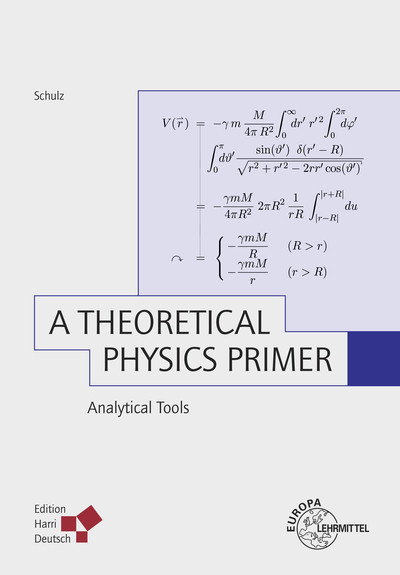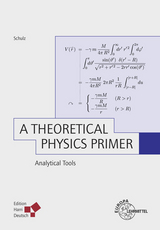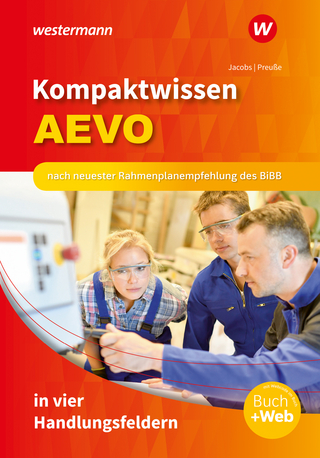A Theoretical Physics Primer
Analytical Tools
Seiten
2015
Europa-Lehrmittel (Verlag)
978-3-8085-5786-0 (ISBN)
Europa-Lehrmittel (Verlag)
978-3-8085-5786-0 (ISBN)
This textbook on physics recommends a slightly unusual but very consequent and straightforward way into this horrible field of science.
This textbook on physics recommends a slightly unusual but very consequent and straightforward way into this horrible field of science. Soon one encounters formulae. But the given detailed explanation of each symbol and sign rests on the pictures and perceptions known to everyone from daily life - no experiments, no computer, no videos. Imagination saves time. The material is based on lectures held for students in their first year 12 times at University of Hannover, Germany.
The book is divided into four parts. Chapter 3 on Newtonian Mechanics and chapter 11 on Maxwellian Electrodynamics are the center of the first and second part, respectively. The two chapters in part 3 try to introduce Special Relativity and Quantum Mechanics starting again from everyday life each. Part 4 consists of 78 exercises, each with a sparse clue to the solution.The main text refers to them. Making every effort with these exercises is basic to this course.
Trust yourself!
This textbook on physics recommends a slightly unusual but very consequent and straightforward way into this horrible field of science. Soon one encounters formulae. But the given detailed explanation of each symbol and sign rests on the pictures and perceptions known to everyone from daily life - no experiments, no computer, no videos. Imagination saves time. The material is based on lectures held for students in their first year 12 times at University of Hannover, Germany.
The book is divided into four parts. Chapter 3 on Newtonian Mechanics and chapter 11 on Maxwellian Electrodynamics are the center of the first and second part, respectively. The two chapters in part 3 try to introduce Special Relativity and Quantum Mechanics starting again from everyday life each. Part 4 consists of 78 exercises, each with a sparse clue to the solution.The main text refers to them. Making every effort with these exercises is basic to this course.
Trust yourself!
Prof. Dr. Hermann Schulz, Hochschuldozent Geboren 1938 in Zittau, Promotion 1970 bei W. Brenig in München 1973-2003 am Institut für Theoretische Physik der Universität Hannover Arbeitsgebiet: QCD bei hoher Temperatur
| Erscheinungsdatum | 31.10.2015 |
|---|---|
| Verlagsort | Haan |
| Sprache | englisch |
| Maße | 160 x 230 mm |
| Gewicht | 587 g |
| Themenwelt | Schulbuch / Wörterbuch ► Schulbuch / Berufs- und Fachschule |
| Naturwissenschaften ► Physik / Astronomie | |
| Schlagworte | Harri Deutsch • Ingenieurstudium • Mathematik • Mathematik; Handbuch/Lehrbuch (Naturwissenschaften) • Mathematik; Handbuch/Lehrbuch (Physik) • Naturwissenschaften • Naturwissenschaften - Physik • Physik • Studium • Studium - Physik |
| ISBN-10 | 3-8085-5786-9 / 3808557869 |
| ISBN-13 | 978-3-8085-5786-0 / 9783808557860 |
| Zustand | Neuware |
| Haben Sie eine Frage zum Produkt? |
Mehr entdecken
aus dem Bereich
aus dem Bereich
Schulbuch
Buch (2024)
Westermann Berufliche Bildung (Verlag)
32,95 €
2. Ausbildungsjahr Schulbuch
Buch | Softcover (2024)
Westermann Berufliche Bildung (Verlag)
36,95 €
Informationshandbuch
Buch | Softcover (2024)
Westermann Berufliche Bildung (Verlag)
46,50 €




